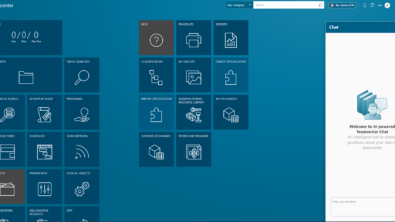An Integrated Product Definition: Solving Real-World Problems

Innovation comes in many forms. It’s the discovery of a new ski jumping technique that forever changes the sport. It’s companies finding new ways to meet their own goals while satisfying the demands and imagination of the market.
But product complexity can stifle innovation. Siemens PLM customers manufacture some of the most unforgiving, complex products on the planet, but their customer bases demand flexibility and choice. What can we do to help our customers meet their own customers’ demands and still be innovative and profitable?
In this series, we’re exploring how an Integrated Product Definition, or IPD, addresses increasing complexity to help drive innovation.
Real-World Integrated Product Definition Applications
If you speak with actual users, you know there are challenging tasks to complete. Let’s talk about some of the doozies. Then we’ll look at how an Integrated Product Definition makes these tasks manageable.
Powertrain Engineer. Imagine a powertrain engineer at an automotive company. She’s been asked to re-design a support bracket that will be used on every V6 diesel engine for a passenger car product line. How does she make sure it fits without interference for every possible V6 diesel variant in that line?

Photo courtesy ProductionCars.com
This engineer isn’t limited to only pre-defined tracking configurations when she does her analysis. She needs two pieces of information: her task (redesign the bracket) and the scope of her change (all diesel engines).
Leveraging IPD, the engineer can select the bracket she needs to replace either from the bill of materials or by selecting the geometry from the visualization window. She can directly ask what other content could possibly co-exist in a valid configuration with the bracket. With a single mouse click, she eliminates everything only valid for gasoline engine configurations and everything irrelevant for V6 engines. The context is set. She knows what her spatial constraints are for her redesign. She can even launch all of these configurations at once into NX to do her design work.

Freshwater System Designer.
An engineer is designing the freshwater system for a cruise ship line. The pipe is hundreds of meters long and will pass through multiple rooms. He needs to design access holes to pass through the walls and bulkheads along the way. It must be a tight fit next to the ship structures, the HVAC and electrical systems and possibly other systems. How does he find and load the geometry for all parts near where the pipe will pass so he can design an optimal route?
There are three things he doesn’t need. He doesn’t need to know where in the product his pipe or the things near it are organized. He doesn’t need to navigate around a large product structure to find what he needs. And he doesn’t need to load a bunch of content and then hide what he decides is irrelevant.
With IPD, he can select the freshwater system which organizes all of his piping content. If he’s updating an existing pipe run, he can request the system to return to him freshwater pipes located in certain spatial zones he chooses. Once he has those results, he can choose the pipe run he needs to modify and return all content within 50 centimeters of it.
If he’s designing a new freshwater pipe, he can construct a long volume that matches where he expects the pipe to be and return all content from that volume, regardless of what system it belongs to or where it’s organized within the ship breakdown.
Heavy Equipment Sales Engineer. A machinery company sales engineer sits with a customer who wants to order an updated fleet of earth movers. As the customer chooses which features he needs, he wants to see an accurate representation of what each machine looks like to make tradeoff decisions and ensure the achines will meet his needs.How does the engineer show him in real-time exactly what he’s ordering?

It isn’t compelling to sit with the customer and ask him to make decisions over an Excel sheet or feature list. The engineering wants to excite his customer and clearly describe, configure and visualize exactly what he’ll get. The engineer needs a streamlined way to show the different features available and immediately wow the customer by showing what the machines will look like based on his choices.
The engineer has the perfect tool to do this. He can view all available options, lead the customer through a wizard for each machine he configures and then show the geometry for the exact variant of the new machine he’s considering. The system determines which options are compatible with what’s already been chosen and makes it clear what additional options are compatible. The engineer can even take multiple configurations and overlay them to compare the differences, make tradeoff decisions and meet the customer’s needs.
We’ve been discussing many aspects of an Integrated Product Definition over the last several months. From a series about configurator for total variability management, to detailed exploration of configuration management, product variant management, guided product configuration, and master data management. In this series, we are exploring IPD from the perspective of real world examples. Next time, we’ll take a closer look at how an aircraft engineer, a release engineer and a product engineer can each leverage IPD.
Other discussions in this series include:
An Integrated Product Definition: Driving Innovation
An Integrated Product Definition for a consistent Bill of Materials


